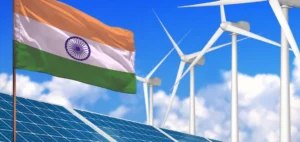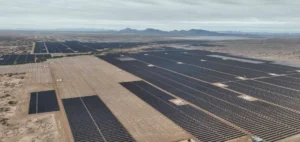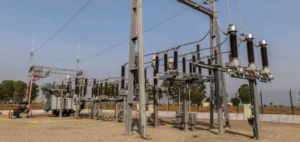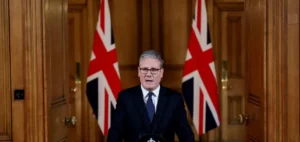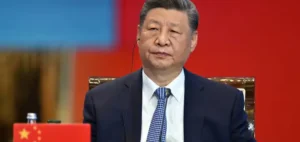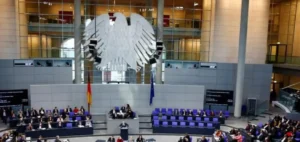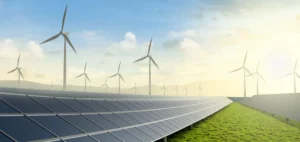The European Parliament adopted on Tuesday the main part of the EU’s ambitious climate plan, including the vast reform of its carbon market and the “carbon tax” at the borders to green its imports. The extension of the carbon market to housing and transport for individuals was the most controversial point, in the midst of inflation.
A social climate fund is planned to mitigate the consequences for the poorest. “Together we will make Europe the first climate-neutral continent,” reacted Commission President Ursula von der Leyen, who welcomed the votes and called on the member states to complete this final step.
In parallel with this climate plan, the EU-27 are preparing legislation to boost the competitiveness of their green industries in the face of massive US subsidies and colossal Chinese investments in the sector. The EU is also seeking to secure its supplies of rare earths, lithium and other components essential to green technologies, but for which it remains heavily dependent on China.
Reform of the carbon market
This reform should make it possible to achieve the ambitious greenhouse gas reduction objectives of the EU-27 climate plan. To cover their CO2 emissions, electricity producers and energy-intensive industries (steel, cement, etc.) in the EU must now buy “pollution permits” on the European Union Emissions Trading Scheme (ETS), which was created in 2005 and applies to 40% of the continent’s emissions.
The total amount of allowances created by the states decreases over time to encourage industry to emit less. The reform provides for an acceleration of the rate of reduction of the proposed allowances, with a reduction of 62% by 2030 compared to 2005 (compared to a previous target of 43%): overall, the industries concerned will automatically have to reduce their emissions by the same amount.
The carbon market will gradually be extended to the maritime sector, to emissions from intra-European flights, and from 2028 to waste incineration sites, subject to a favourable study by Brussels. A second carbon market (ETS2) is planned for building heating and road fuels. Households will pay a carbon price on fuel and heating from 2027, but the text aims to cap this at 45 euros/tonne at least until 2030, and if the current surge in energy prices continues, the implementation would be postponed to 2028. However, Green and left-wing MEPs stressed that this ceiling was not guaranteed.
“The price will be set by the market,” noted French MEP Marie Toussaint (Greens).
“Carbon tax” at the borders
The “border carbon adjustment mechanism” (CBAM) is not strictly speaking a tax, but an unprecedented mechanism that applies the criteria of the European carbon market to imports from the 27 Member States, where EU manufacturers are required to buy quotas to cover their polluting emissions.
The importer will have to declare the emissions related to the production process, and if these exceed the European standard, acquire an “emission certificate” at the EU CO2 price. If a carbon market exists in the exporting country, it will only pay the difference. It will target the sectors considered the most polluting (steel, aluminum, cement, fertilizer, electricity). The expected revenues, which could exceed 14 billion euros annually, will be fed into the general EU budget.
A test period will begin in October 2023, during which importing companies will simply have to report their obligations. As this “carbon tax” at the borders is ramped up — between 2026 and 2034 — the EU will gradually phase out the free emission allowances allocated to European manufacturers to enable them to compete outside Europe.
Social Fund
86.7 billion, a Social Climate Fund (SCF) designed to help micro-enterprises and vulnerable households in this energy transition, is to be set up in 2026. Revenues from the new carbon market (ETS2) will provide the bulk of this fund.
It is intended to finance temporary direct income support measures to address rising road transport and heating prices, but also long-term investments such as building retrofits, integration of renewable energy, purchase and infrastructure for zero and low emission vehicles, and use of public transport and shared mobility services.
But for French MEP Manon Aubry (GUE/NGL, radical left), this social fund “will not compensate for all” the impact of the extension of the carbon market to individuals. “Nothing has been learned from the yellow vests,” she worried.




